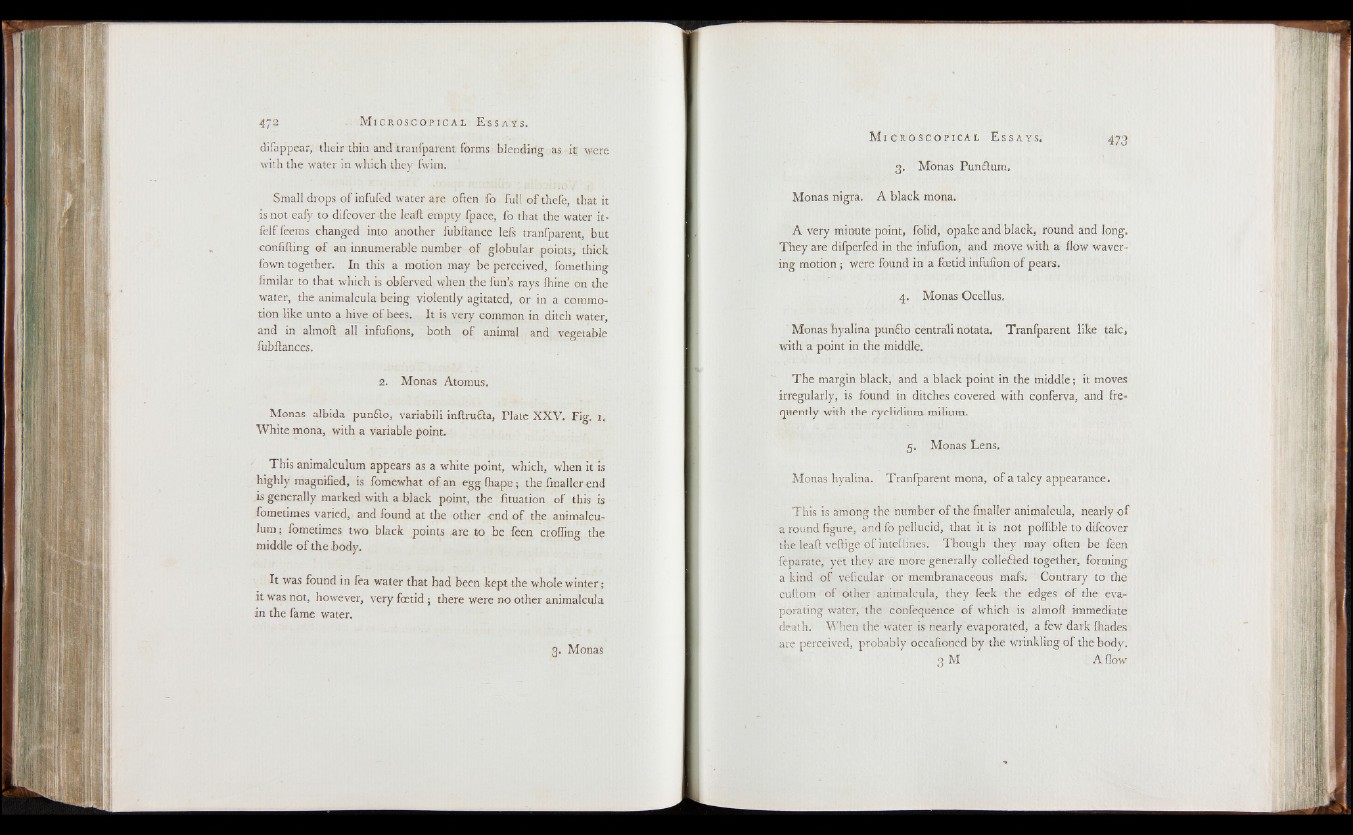
difappear, their thin and tranfparent forms blending as it? were
with the water in which they fwim.
Small drops o f infufed water are often fo full of thefe, that it
is not eafy to difcover the lea'll empty fpace, fo that the water it-
felf feems changed into another fubliance lefs tranfparent, but
confiding of an innumerable number o f globular points, thick
fown together. In this a motion may be perceived, fomething
fimilar to that which is obferved when the fun’s rays fhine on the
water, the animalcula being violently agitated, or in a commotion
like unto a hive of bees. It is very common in ditch water,
and in almoft all infufions, both o f animal and vegetable
fubflances.
2. Monas Atomus.
Monas albida punflo, variabili inflrucla, Plate XXV. Fig. 1.
White mona, with a variable point.
This animalculum appears as a white point, which, when it is
highly magnified, is fomewhat o f an egg fhape; the fmaller end
is generally marked with a black point, the fituation of this is
fometimes varied, and found at the other end o f the animalculum
; fometimes two black points are to be feen croffing the
middle o f the body.
It was found in fea water that had been kept the whole winter ;
it was not, however, very foetid ; there were no other animalcula
in the fame water.
3. Monas
3. Monas Pundtum.
Monas nigra. A black mona.
A very minute point, folid, opake and black, round and long.
They are difperfed in the infufion, and move with a flow wavering
motion ; were found in a foetid infufion o f pears.
4. Monas Ocellus.
Monas hyalina punclo centrali notata. Tranfparent like talc,
with a point in the middle.
The margin black, and a black point in the middle; it moves
irregularly, is found in ditches covered with conferva, and frequently
with the cyclidium milium.
5. Monas Lens.
Monas hyalina. Tranfparent mona, o f a talcy appearance.
This is among the number o f the fmaller animalcula, nearly o f
a round figure, and fo pellucid, that it is not polfible to difcover
the lead vetlige of inteflines. Though they may often be feen
feparate, yet they are more generally collefted together, forming
a kind of veficular or membranaceous mafs. Contrary to the
cuflom of other animalcula, they feek the edges o f the evaporating
water, the confequence of which is almoft immediate
death. When the water is nearly evaporated, a few dark fhades
are perceived, probably occafioned by the wrinkling of the body.
3 M A flow